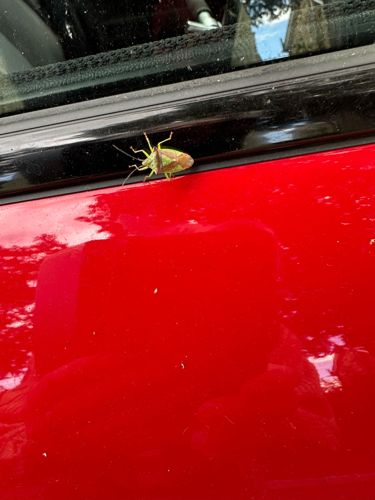Green Stink Bug
Scientific Name: Chinavia hilaris (formerly Acrosternum hilare)
Order & Family: Hemiptera (True Bugs), Pentatomidae (Stink Bugs)
Size: Typically 12-19 mm (0.5-0.75 inches) in length.

Natural Habitat
Found in various habitats including gardens, agricultural fields, woodlands, and urban areas, often on a wide range of host plants, including trees, shrubs, and herbaceous plants.
Diet & Feeding
Polyphagous, feeding on the sap of a wide variety of plants, including fruits, vegetables, and ornamental plants, using their piercing-sucking mouthparts. They can feed on various parts of the plant, including leaves, stems, flowers, and developing seeds/fruits.
Behavior Patterns
Green stink bugs are active during the day. They have a characteristic shield-shaped body. When disturbed, they can emit a foul-smelling liquid from glands on their thorax, hence their common name 'stink bug.' They undergo incomplete metamorphosis (egg, nymph, adult). Adults often overwinter in sheltered locations.
Risks & Benefits
Risks: Considered an agricultural pest as their feeding can cause significant damage to crops, leading to dimpled, discolored, or aborted fruits and seeds. Benefits: They can sometimes serve as food for predatory insects and birds, and in some cases, certain species of stink bugs (though not typically the green stink bug) are predatory on other insects, but this species is primarily herbivorous.
Identified on: 9/21/2025